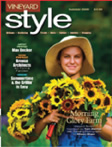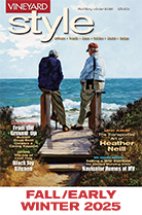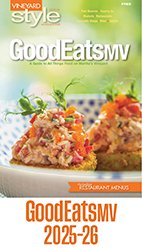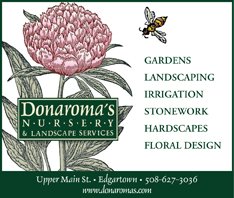ARTIST PROFILE
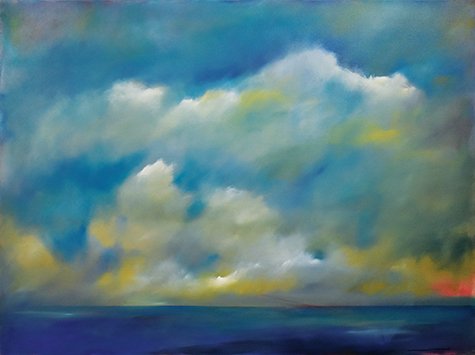
From Science to Canvas:
Marston Clough’s Journey of Discovery and Expression Through Art
By Diane Alter
Marston Clough’s artistic journey began somewhat unexpectedly in the midst of a successful career as a high school science teacher. At 45, Clough took a spring workshop at the Massachusetts College of Art titled “Drawing for Beginners.” What started as a casual interest quickly transformed into a passion that would shape his creative life. “I was hooked,” Marston recalls, “and I quickly discovered that I enjoyed the challenge and occasional positive results of drawing and sketching.”
Inspired by this newfound interest, Marston began taking evening classes at the Worcester Art Museum, where he found a unique intersection between his background in science and his growing love for art. “I never considered myself an artist, but rather a science teacher who enjoyed art,” Marston reflects. “I never relied on my paintings for income, but painting was more than just a hobby–it was a passion.”
His paintings, however, are indeed proof that Marston is a true artist.
Marston’s scientific background, particularly in chemistry, contributed to a fascinating application in the printmaking process, especially in the use of acids on metal plates for etching. The precision and variety of results that could be achieved resonated with his analytical mind.
When Marston was teaching, painting was still a new passion, but he knew it was something he had to do. When his students were taking a test, he would be sketching. Sometimes it was the tops of their heads, but he was sketching. During commutes between the mainland and the island, Marston sketched people on the ferry–mostly men with caps because he could make them look scruffy. But he chuckled, saying he would not do that to the women onboard.
When Marston paints, he mostly works in oils, inspired by the colors of the sky, sea, and surroundings. Whether outdoors or in his studio, he often shifts focus from the scene in front of him to the canvas itself. This introspective approach can lead to challenges with composition, value, and color harmony, but also to moments of serendipitous success. “It’s pleasurable when things work out,” he says, acknowledging that sometimes the real magic in a painting appears months later.
“Sometimes I look at a piece I did years ago that I thought was done, only to see it with new eyes and realize it is not yet done,” Marston said. “Sometimes when I get back a piece that I lent to someone, I see it differently. And there are times when it is thrilling to see a piece in a different setting. That is what makes me happiest–when it just works.”
Marston explained he is not a structured or rigid painter who works a typical 9-to-5. While he spends most days painting, he usually starts in the morning after breakfast and a walk with his wife, Louise. Still, Marston said he thinks about painting–a lot.
Growing up on Martha’s Vineyard, Marston was surrounded by the natural beauty that he now strives to capture in his work. Yet, it wasn’t until later in life that he truly appreciated the island’s landscapes, particularly the sky and horizon that often dominate his compositions.
“As a child, I took my surroundings for granted,” he admits. “Now, they serve as a constant source of inspiration.”
Martha’s Vineyard’s blend of natural beauty, cultural richness, and supportive community makes it a perfect haven for artists like Marston to create, reflect, and grow in their artistic journeys. The island’s diverse landscapes–from serene beaches to rolling hills, lush forests, and charming harbors–provide endless inspi-ration. The ever-changing light, particularly during sunrise and sunset, adds a dynamic quality to the scenery, challenging artists to capture its fleeting beauty.
The island is home to numerous galleries, art festivals, and creative communities that foster collaboration, inspiration, and friendship. Martha’s Vineyard hosts a thriving community of artists, ranging from painters and sculptors to writers and musicians. This sense of community encourages collaboration, the exchange of ideas, and opportunities for growth through workshops, exhibitions, and local art events. Marston said he is grateful for the camaraderie from fellow artists who have supported and given him great advice. “I am not classically trained. I find the constructive criticism very helpful and welcome.”
He is also grateful for the support of his wife, Louise, who has a keen eye when it comes to hanging pictures for a gallery showing. “Louise’s input makes a big difference. She knows what flows and what to leave out to make a wall look better.”
When painting outdoors, Marston usually goes to an island location with a couple of other artists and paints for about three hours. What he goes home with is the start of a piece, never the final version. In his studio, Marston may start with a photograph, but he quickly moves beyond it, creating imagined places where he’d like to be.
Marston’s summer colors tend to be soft hues. Winter, however, inspires different colors and themes. The final season of the year’s magnificent, sometime angry, storm clouds call for a lot of grays.
With an active mind and everchanging landscape, Marston often has two to three paintings going at once.
“I am not rigid. I am not traditional. At times, I can be impulsive. I paint what I am thinking when I am thinking about it.”
For Marston, deciding when a painting is finished can be an agonizing process, fraught with the fear of making the wrong choice. Yet, when everything clicks, the result is exhilarating.
“Sometimes a quick painting may turn out better than one that took weeks,” he observes. “Recently, with some paint left on my palette, I dashed off a few pieces. I had no plans. I had put them away but brought them out again. They work.”
His influences are broad, from the bold shapes and colors of the German Expressionists to the tumultuous skies of JMW Turner and the vibrant palettes of Milton Avery and Mark Rothko. Marston’s admiration extends to local artists as well, many of whom have become close friends and collaborators.
Taking inspiration from an artist in California, Raimonds Staprans, Marston said he is now often toying with starting with a completely red canvas and starting his painting over it. It is something new. He has no plans or expectations, but he is excited to see what comes of it.
Marston encourages anyone interested in painting to embrace the process, with all its frustrations and joys. He emphasizes the importance of having a dedicated space to work, where paintings can evolve over time. “It is not easy,” Marston says. “But it is a beautiful process even when things do not always work.”
Those words, like art, resonate on multiple levels. Art evokes emotions–whether it’s joy, sadness, anger, or awe. It connects with the viewer on an emotional level, creating a lasting impression.
To be sure, Marston leaves a lasting impression not just with his canvas creations, but with anyone who has the pleasure of meeting him.
In the end, Marston’s journey from science to art is a testament to the power of curiosity and the unexpected paths it can lead us down. His work, deeply rooted in both his analytical mind and his love for beauty, continues to evolve, much like the landscapes he so skillfully captures.
Marston’s paintings are evidence of his extensive experience and artistic mastery. The precision of his brushstrokes, the depth of emotion captured in his subjects, and the subtle complexity of his color palettes all reveal the hand of a seasoned artist. His ability to convey intricate details while maintaining a cohesive and impactful composition demonstrates a high level of technical skill and creative insight from both the artist and the scientist.
Moreover, the maturity in Marston’s themes and the confidence in his execution are clear indicators of an artist who has honed his craft over many years, making his works a true reflection of an accomplished career.
When asked if he finally thinks he has “arrived,” on the art scene, Marston answered humbly. “I never thought I would be an artist. When I think about it now, I think mostly about how lucky I am to have found this passion and that others seem to enjoy it.”
Lucky for all of us indeed.
Marston’s paintings can seen at KIN in Edgartown, and seasonally at the Old Sculpin Gallery and Featherstone Center for the Arts.

